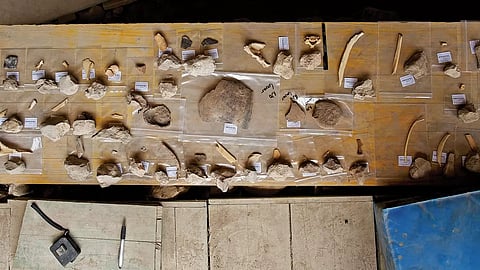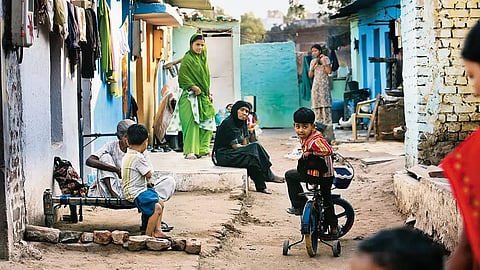There is no because to murder. Because cannot exculpate the act of taking a human life, nor explain it. Equally, the intent to murder is also a surmise.
What It Means To Murder And How We Ought To Understand It
Murder shows us the fragility of human life and our need to value it
Murder has only one irrefutable fact: the body.
Death isn’t so frightening but the body after death terrifies us all. In civilised societies, the body must be quickly vanished before it disintegrates into an object of disgust. Last rites were invented to make for a dignified exit. When death comes as a natural end, such kindly funerary practices successfully protect the living from witnessing the horrors of decay.
Homicide lacks this escape route. The corpse continues to confront the murderer. Until it can be dispersed by stealth, it persists as rational and tangible proof of an irrational act. The sheer bulk of dead tissue and its refusal to be compacted, its spillage and its stink, all confound the killer into unspeakable acts of desperation.
When these acts are discovered, we are sickened by their brutality. What rational being could commit such atrocities? The very thought concusses reason. How could the killer have even imagined them? The question is not entirely rhetorical, for pat comes the answer: ‘Probably read it somewhere. Saw it in a movie, maybe’. To refute that comment completely, one must retreat to a time before movies and books, before speech, before we became Homo sapiens.
From Sima de los Huesos (‘the pit of bones’), an archaeological site in the Atapuerca Mountains of northern Spain near Burgos, comes forensic evidence of a gruesome murder: a 430,000 year old hominid skull shattered by an assault that must have caused immediate death. It is easy to imagine the element of surprise: the young man turns to face the killer who stuns him with two penetrating blows to the forehead, literally skewering his brain.

Homicide is as ancient as Homo. History, religion, and myth are replete with unspeakable deeds of violence. Human existence seems inseparable from unnatural endings.
In the Mahabharata, Kansa, threatened by a prophecy, kills every baby his sister birthed, by dashing the new-born’s head on the flagstones of her prison cell.Compare this imaginative narrative with an actual incident recorded by the Human Rights Commission in Naroda Patiya, Gujarat, on 28 February, 2002:
“Men and women were segregated; young girls were stripped, gang-raped, lynched and thrown into the burning fire. No man was spared. A young woman, Quasar, in advance-stage (sic) of pregnancy, pleaded for her life. Her abdomen was slit open, the foetus was taken out and thrown into the fire. They picked up the woman and threw her into the same fire.” The perpetrators are celebrated today as heroes. This, surely, is the ultimate barbarity. Can the spirit of India be degraded any further? Yet, such enormities are rife in every country and culture. Can our species still claim sapience?
Since the revelation of Shraddha Walkar’s murder, the because of it is everywhere, disregarding the truth that this is life, not fiction. In real life, murder is irrational, even when it is rationalised by the state as death penalty or war; even when socially sanctioned as infanticide, sati, jauhar or ‘dowry death’. Everything about taking a human life is skewed. Morally, it is evil in its furthest extremity. Biologically, it threatens the survival of the species because its prevalence indicates an escalation of chaos.
Fiction, specifically crime fiction, is an attempt to impose order on that chaos by using reason and logic to explain an irrational event, and make it somehow plausible. By its very intent, crime fiction is an artifice. Even in its most classic expositions of murder, it does not presume to approximate reality. If fiction were to imitate life, every self-respecting publisher would reject the story. The gulf between murder in real life and that in fiction is practically unbridgeable.

I became aware of this gulf at the age of 18, when, in the second year of medical college, I was introduced to forensic medicine. The prescribed textbook was unreadable; so I found a fifty-year-old edition of Modi’s Indian Jurisprudence. I had so far been nourished by detective fiction of every stripe, but nothing had prepared me for the case histories in this book which mostly described rural India of the 1920s.
“.. a study in scarlet, eh? Why shouldn’t we use a little art jargon. There’s the scarlet thread of murder running through the colourless skein of life, and our duty is to unravel it, and isolate it, and expose every inch of it …” exclaimed Sherlock Holmes in his first celebrated appearance.
A neurotic goal, surely, but I treasure the word ‘duty’ there. It describes not so much Holmes’ compulsion as that of his author. All detective fiction is compelled by a basic human drive—the quest for justice. When life cheats us of justice, we seek validation in the pages of books where murder will out itself, and satisfactorily too, most of the time.
The fun of a detective story is in the puzzle which can quickly change from a quest for justice to a battle of wits where the best man wins—not necessarily the detective. It has all the props of real-life crime, but they are, very obviously, props. The principal prop is the body. It is arranged to a nicety, with just enough gore for forensic detail. The story engages the reader like a crossword. The pleasure is purely intellectual.
The ‘serious crime’ novel persuades the reader to examine the criminal, not the crime. 30 years ago, I read Emile Zola’s La Bête Humaine, tranlated as The Beast in Man, and still consider it the best study of compulsive crime ever written. It foists on the reader the murderer’s burden of guilt. The body is no more than an irritating footnote. The engagement here is intensely moral, torn as we are between compassion for the criminal and revulsion for the crime. A ‘There but for the grace of God go I’ kind of read.
And then there is the third sort of book that trades entirely on squelch: dismemberment, putrefaction and gore. It relies on the seductiveness of horror, and engages the reader at a visceral level—lubricious and pornographic. It has always been popular. And yet, it pales before the nightmare reality of Naroda Patiya.
A fortuitous encounter led me to examine a murder committed nearly a century ago. A forensic cause célèbre, its details are not very different from the Shraddha Walkar case. Fragmented body parts recovered piecemeal had been brilliantly reconstructed to establish the identity of the deceased. It was trial by media—in 1935, newsprint only— and the accused man was condemned long before he appeared in court. He was hanged, and a canny journalist published his ‘confession’ the following day. The case, sewn tight, survives only as history.
This standard narrative had too many glaring omissions, and I felt compelled to look deeper. Over the next few years, I fossicked through the documents of the case with growing dismay. Anybody reading them today would consider the trial a gross miscarriage of justice. 87 years ago, the trial was centred on horror: bits and pieces of the victims, photographs of the skull beneath the skin famously blazoned in tabloids, and replicas of the reconstructed bodies. The display overshadowed the man in the dock. It pushed him to the gallows.
I could offer no surmise, let alone evidence, to clear a man I considered deeply wronged. I did the only thing I could. I put him in a novel. As I drew my facts from documented evidence, I faced this troubling question: had it not been for the spectacle of dismembered body parts, would this murder have rocked the world? Which was the true crime—the taking of a human life or the horrifying aftermath?
I think this is a necessary question. The act of murder must shock us for the enormity it is. There is no such thing as humane murder. All murder is brutal and revolting. But we don’t notice that. It is the messy aftermath of a killing that outrages us because it offends our sense of decency. But there is no such thing as a decent murder, and nothing is as offensive as taking a human life.
What happens to the body is an irrelevance, and should not distract us from the act itself. Making this distinction is important to safeguard the preciousness of life. To remind us that the body is a fragile thing and that there is no ‘safe degree’ of violence. Every murder should remind us that the use of even minimal force can, under peculiar circumstances, lead to death. A push, a slap, a kick could be all it takes to end a life. And until we acknowledge that fragility and respect it, there will always be murder. History has made violence normative by dignifying it as glory or religion. Isn’t it time we changed that script?
(This appeared in the print edition as "Writing Murder")
(Their book Gastronāma will be published next month)
(Views expressed are personal)
Kalpish Ratna
Surgeons Kalpana Swaminathan and Ishrat Syed write together as Kalpish Ratna